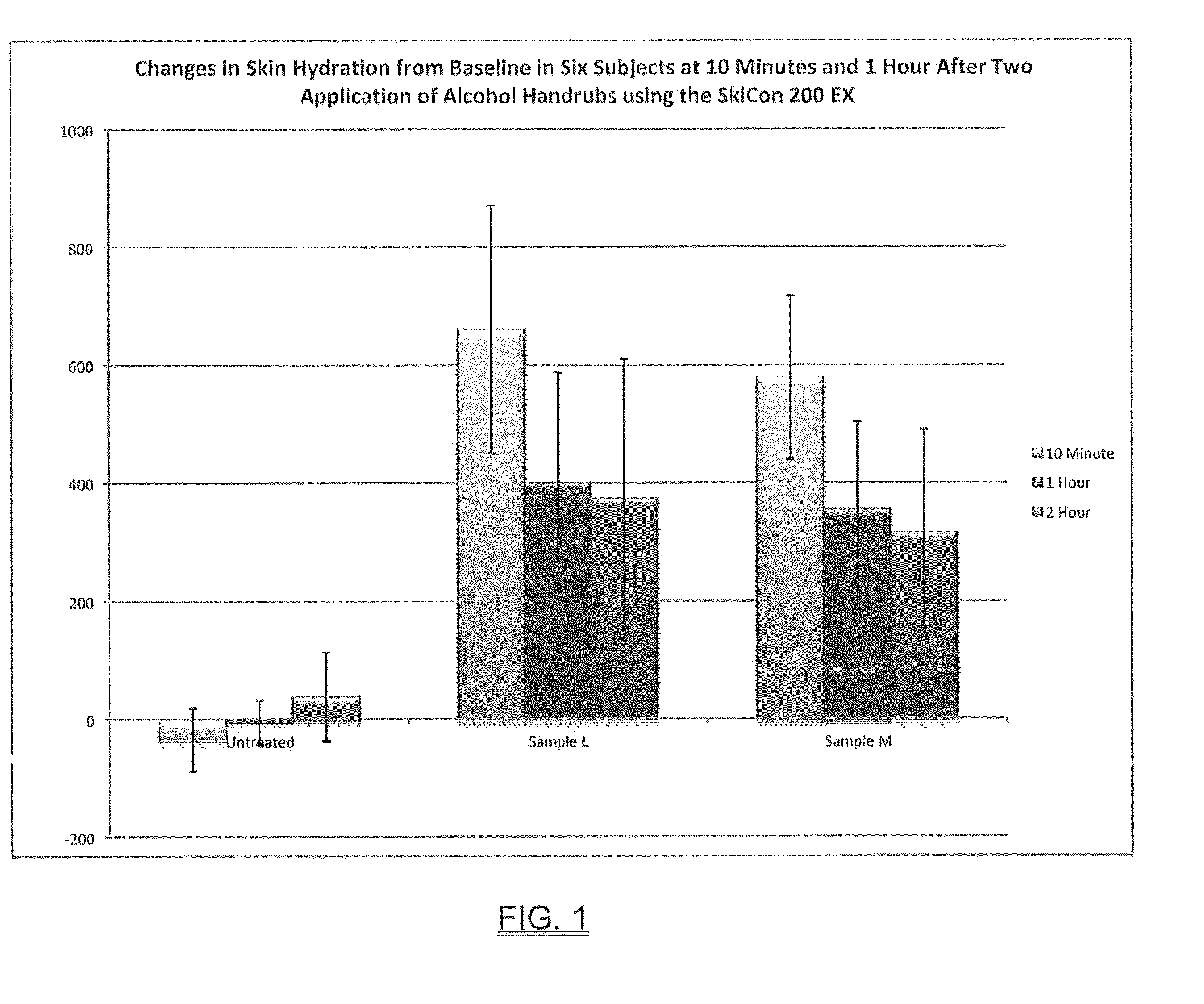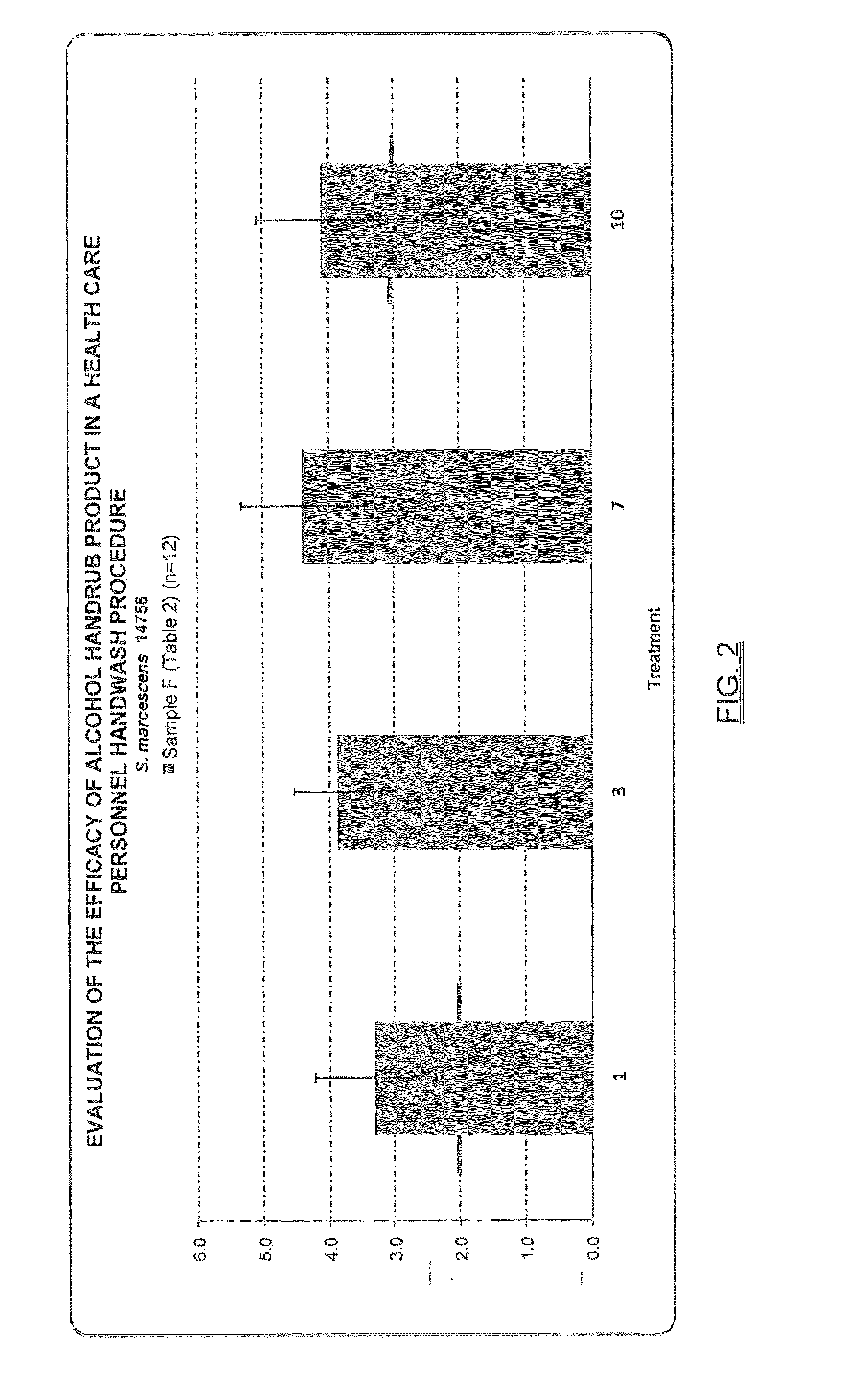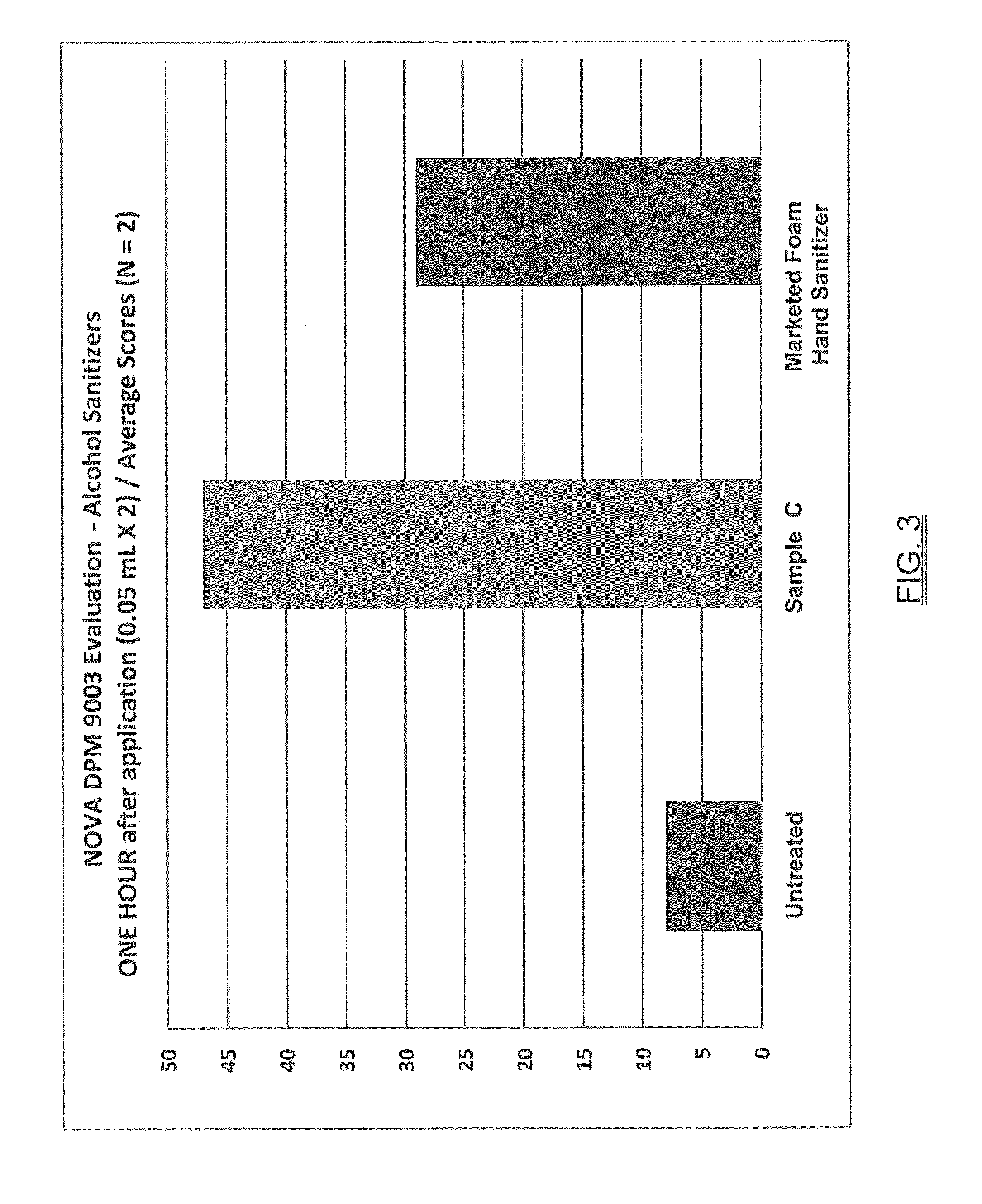Non-aerosol foaming alcohol hand sanitizer
a non-aerosol foaming and hand sanitizer technology, applied in the direction of antibacterial agents, drug compositions, biocides, etc., can solve the problems of no means of killing or controlling microbial growth, no antibacterial activity or effect, and low antibacterial activity of sanitizers using alcohol alone, etc., to achieve enhanced and prolonged antibacterial activity
- Summary
- Abstract
- Description
- Claims
- Application Information
AI Technical Summary
Benefits of technology
Problems solved by technology
Method used
Image
Examples
example 1
Foam Quality and Stability
[0057]A number of different components were screened to evaluate their ability to create a stable foam in a 70% w / w ethanol solution (aqueous). For this evaluation, approximately one gram of each component was added to 15 grams of the ethanol solution in a vial. The vial was shaken by hand for 15 seconds, then the foam profile was evaluated using the following evaluation scale:[0058]Poor—little to no foam generated[0059]Moderate—some foam generated, and / or foam generated collapsed rapidly[0060]Good—large amount of foam was generated and foam was stable (did not collapse rapidly)
[0061]The results of the foam testing are shown in Table 1, below:
[0062]
TABLE 1FoamRaw MaterialProfileSodium Lauroyl LactylatePoorHydrolyzed Corn StarchModeratePhenoxyethanolPoorGlycerinPoorGlycereth-18 EthylhexanoateModeratePPG-12 SMDI CopolymerModeratePEG-8 SMDI CopolymerModeratePolyquaternium-37PoorCocamidopropyl Betaine and Sodium LauroylPoorLactylatePotassium Lauroyl Wheat Amino...
example 2
Moisturization / Hydration Studies
[0064]Several different iterations of the inventive compositions are shown below in Table 2.
[0065]
TABLE 2IngredientABCDEFGHIJKLMDeionized Water36.1037.4138.2136.5336.8537.0035.7437.2534.2234.7634.6036.1037.00Behentrimonium Methosulfate 0.10 0.10 0.19 0.20 0.10 0.10 0.10 0.20 0.20 0.10 0.10Behenalkonium Chloride0.2Glycerin 0.75 0.50 0.47 0.49 0.35 0.51 0.53 0.420.5 0.66 0.75 0.35Polyquaternium-6 0.50 0.55 0.49 0.49 0.50 0.50 0.50 0.57 0.53 0.51 0.52 0.50 0.50Tridecyl Nonanoate 0.25Poloxamer 188 0.45 0.50 0.49 0.49Hydroxypropyl Cellulose 0.24Cetyl Lactate 0.50 0.20 0.52 0.76PEG-17 Dimethicone 2.67 2.99 2.00 3.04 2.98Methylpropanediol 2.00 2.05 1.77 2.11 2.00 1.50 2.00 2.00 2.01 2 2.03 2.00 1.50Phenoxyethanol 1.25 1.24 1.16 1.25 1.25 1.25 2.06 1.25 1.25 1.26 1.25 1.25Cocamidopropyl PG-Dimonium 1.50 1.00 0.45 0.49 1.50 1.50 1.50 1.77 0.52 0.51 1.60 1.50chloride phosphatePEG-45 Palm Kernel Glycerides 0.10 0.10 0.20 0.52 0.10 0.10PEG-7 Glyceryl Cocoate 0....
example 3
Antimicrobial Efficacy-HCPHW
[0068]A Healthcare Personnel Hand Wash study was done to evaluate the efficacy of the inventive composition using the challenge organism Serratia marcescens 14756. S. marcescens is a marker microorganism often used in testing because it produces a characteristic red colony that is easily distinguishable from normal microbial populations of the hands, as well as from other contaminating organisms. Results in FIG. 2 showed significant average log reductions in twelve subjects, which increased with increasing numbers of applications.
PUM
| Property | Measurement | Unit |
|---|---|---|
| heights | aaaaa | aaaaa |
| wt. % | aaaaa | aaaaa |
| composition | aaaaa | aaaaa |
Abstract
Description
Claims
Application Information
 Login to View More
Login to View More - R&D
- Intellectual Property
- Life Sciences
- Materials
- Tech Scout
- Unparalleled Data Quality
- Higher Quality Content
- 60% Fewer Hallucinations
Browse by: Latest US Patents, China's latest patents, Technical Efficacy Thesaurus, Application Domain, Technology Topic, Popular Technical Reports.
© 2025 PatSnap. All rights reserved.Legal|Privacy policy|Modern Slavery Act Transparency Statement|Sitemap|About US| Contact US: help@patsnap.com



